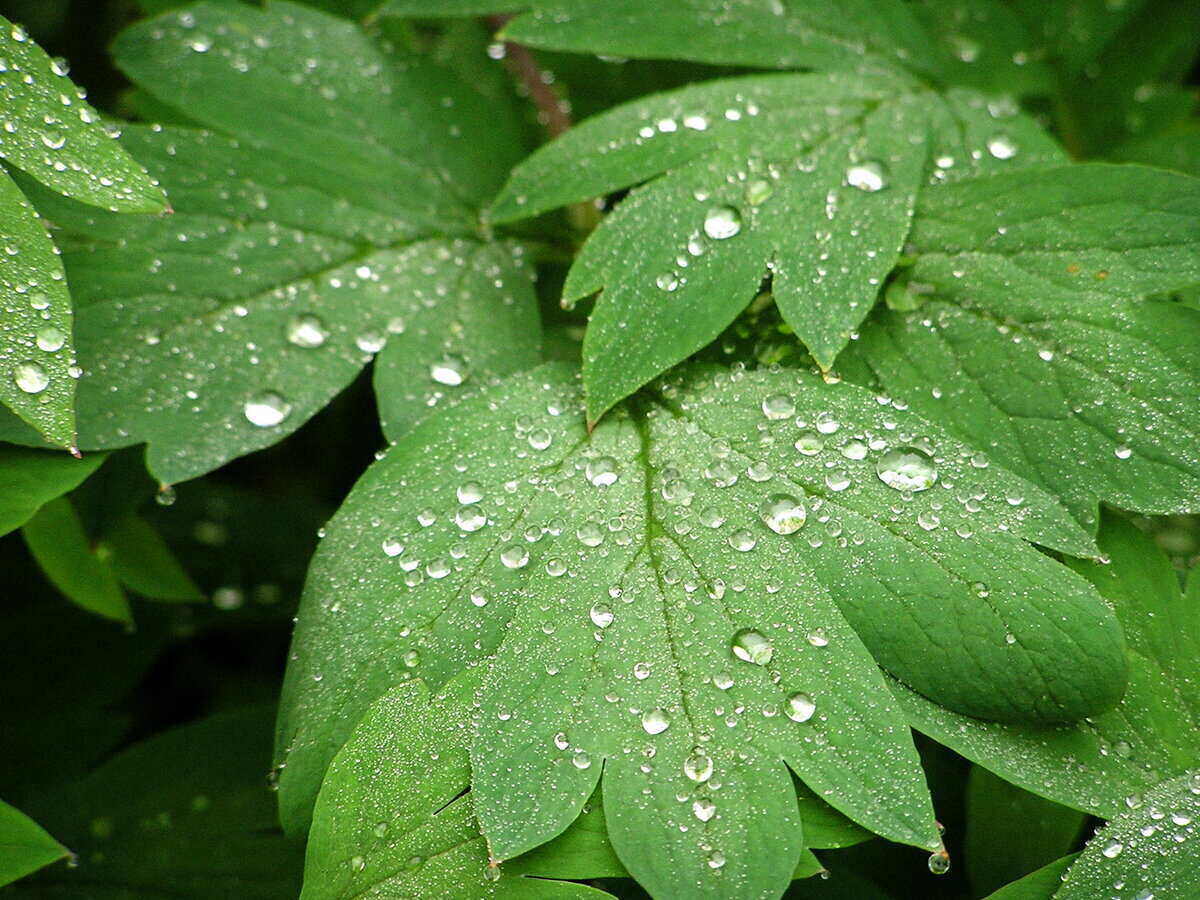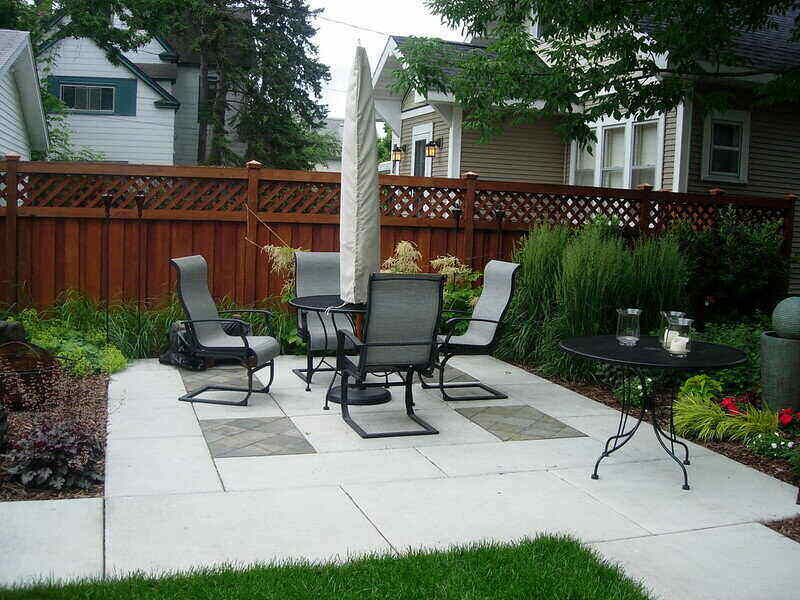
Droughts and fires may turn this Emerald City black, but there are steps you can take to keep your landscape from igniting during a wildland fire.
Follow these steps to reduce the likelihood that your landscape will ignite:
- Create defensible space
- Install fire-resistant plants
- Space your plants
- Plan for fencing and decks
- Add hardscape around your home
Caveat: Experts advise homeowners to prepare their home first and then focus on landscaping. Both of these topics are broad, so we’ll concentrate on firewise landscaping strategies here.
1. Create defensible space

As the name implies, defensible space is a space around your home where the fire department can defend your home in case a fire gets too close. Defensible space slows the spread of fire around your home and helps keep embers from igniting.
The defensible space around your home is divided into three zones:
Zone 0 – Ember-Resistant Zone (0-5 feet from the home or structure)
Embers and small flames are responsible for most home ignitions during a wildfire, so getting this zone right is key. Don’t worry, though, it’s simple: Use non-flammable materials in the 0-5 foot space around your home.
The result? If an ember lands within this space, it can’t ignite if it lands on non-combustible material.
Follow these steps to create an ember-resistant zone around your home:
- Replace mulch and bark with non-flammable materials such as pavers, gravel, or concrete.
- If you have plants in this zone, be sure they are fire-resistant (see Tip #2), well-maintained, and well-watered.
- Remove combustible materials on your deck (furniture, doormats, cushions, etc.) and replace them with non-flammable options.
- Store firewood in a covered area in Zone 2.
- Move boats, vehicles, and garbage containers out of Zone 0.
- Trim limbs at least 10 feet from chimneys.
- If you have a combustible fence attached to the house, replace the last five feet (or more) with a non-flammable material.
- Embers love to ignite on dead leaves, limbs, and debris, so keep this area clean!
Zone 1 – Lean, Clean, and Green Zone (5-30 feet from the home or outdoor buildings)
The goal in Zone 1 is to keep fire from spreading to the home.
Lean: Keep areas of plants, trees, and vegetation separated into “islands.” No dense vegetation in this zone.
Clean: Regularly remove dead vegetation such as leaves, needles, and branches. Keep plants pruned and well-maintained.
Green: Make sure the plants in this zone are properly watered. No dry, brown vegetation.
Specific tips for Zone 1:
- Keep your grass in this area well-watered and no higher than 3 inches.
- Keep tree branches trimmed so they are 10 feet apart from other branches.
- Remove tree limbs that are overhanging the roof.
- Make sure the area underneath decks is pristine. No dead leaves or debris.
Zone 2: Reduce Fuel Zone (30-100 feet from the house or outdoor buildings)
The goal in Zone 2 is to restrict the spread of the fire and keep the fire from moving into tree canopies.
- Create proper space between shrubs and trees (See Tip #3).
- Keep annual grasses at no more than 4 inches.
- Remove as much debris as possible. Fallen debris is allowed to a depth of 3 inches in this area.
- If you have woodpiles out in the open (i.e., not in a covered shed), keep 10 feet of bare dirt around the pile on all sides.
2. Install fire-resistant plants
Fire-resistant plants are an important part of a fire-resistant landscape. Fire-resistant plants can burn and ignite, but they don’t contribute to the spread of a wildfire.
Fire-resistant plants have these attributes:
- The leaves have a high moisture content and are supple and moist
- Plants don’t accumulate dead material (or accumulate very little)
- Low amounts of resin or sap
Combustible vegetation has these attributes:
- Plant leaves have a strong smell if crushed
- Accumulates lots of dead matter such as needles, leaves, and twigs
- The sap is resinous and gummy
Consider these plants as a firewise addition to your landscape:
Perennials:
- Delphinium (Delphinium species)
- Lupine (Lupinus varieties)
- Yarrow (Achillea species)
Shrubs:
- Mock orange (Philadelphus species)
- Oregon grape (Mahonia aquifolium)
- Red flowering currant (Ribes sanguineum var. sanguineum)
- Red-osier dogwood (Cornus sericea)
Ground cover:
- Fleabane (Erigeron hybrids)
Trees:
Note: Conifers such as Douglas fir are common in the Pacific Northwest, but most conifers are not considered fire-resistant. The ponderosa pine and western larch, however, are two exceptions. A thick coat of bark and high moisture content in the needles gives these trees more resistance to fires.
- Ponderosa pine (Pinus ponderosa)
- Western larch (Larix occidentalis)
Remember to prune dead plant material regularly and maintain the proper water levels for each plant. In a fire-resistant landscape, maintenance is key.
3. Space your plants

When you think about plant spacing, think about two things: vertical space and horizontal space.
Vertical space: The amount of vertical space between two plants.
It’s important to keep at least 6 feet of vertical space between the ground and the lowest tree branches. This helps reduce ladder fuels and the potential for crown fires.
If you have shrubs underneath your trees, use this formula: Shrub height x 3 = minimum vertical spacing. Ex. If the shrub is 4 feet tall, 4 x 3 = 12. Keep at least 12 feet between the top of the shrub and the lowest tree limb on the tree.
Horizontal space: The amount of horizontal space between two plants.
The amount of horizontal space between plants depends on the slope and type of vegetation.
Flat land or slight slope (< 20% slope):
- Shrubs: Measure the shrub’s height. Multiply by two.
Ex. Shrub is 4 feet tall. 4 x 2 = 8. Keep 8 feet between shrubs.
- Trees: Keep 10 feet of space between trees.
Slight to moderate slope (20%-40%):
- Shrubs: Measure the shrub’s height. Multiply by four.
Ex. Shrub is 4 feet tall. 4 x 4 = 16. Keep 16 feet between shrubs.
- Trees: Keep 20 feet of space between trees.
Slopes that are >40%:
- Shrubs: Measure the shrub’s height. Multiply by six.
Ex. Shrub is 4 feet tall. 4 x 6 = 24. Keep 24 feet between shrubs.
- Trees: Keep 30 feet of space between trees.
4. Plan for fencing and decks
Many decks and fences are made of combustible materials, such as wood, which is a prime fire hazard during a wildfire. Most homeowners don’t want to replace their entire wooden structures, so here are a few things to consider to increase the fire resistance around your home.
Fencing
Wood fencing is not ideal in a home landscape that is prone to wildfires. Even with a yard that is otherwise ignition-resistant, a wood fence can ignite and transfer embers to the home. Non-flammable building materials such as metal are ideal, but here are a few tips to consider if replacing your wood fence is not an option.
- Keep it clean! Remove all leaves, twigs, and debris from the base. Try to keep at least 1 inch of space between the ground and the fence to prevent decay and make cleaning easier.
- If you want to trellis a plant, don’t do it on your wooden fence. Use a metal trellis.
- If your fence or gate is attached to the house, replace at least the last 5 feet with a metal or non-combustible material.
- Privacy fences, with planks on one side and a horizontal bar on the other, are particularly susceptible. The intersection of the plank and horizontal bar creates a perfect ledge for embers to collect and ignite the fence. Fences with alternating planks and lattice fences may be less susceptible to ember ignition.
Decks
Decks are usually in Zone 0, which means they should, ideally, be constructed with non-combustible materials. Steel decks with non-combustible decking boards are becoming more popular as a fire-resistant decking option.
If you want to keep an existing wood deck, here are a few tips:
- Keep the surface and underside of the deck clean and free of debris.
- Consider putting gravel or other non-flammable materials on the ground underneath the deck. (But don’t forget to clean it regularly.)
- Consider using steel joists or replacing deck boards with hardwood (as opposed to softwood), plastic composites, or fire-retardant treated wood.
- Maintain an ember-resistant zone 5 feet around the deck.
- Use metal flashing above and below the ledger board against the side of the house.
- Remove the deck board directly against the house and replace it with a non-flammable material.
5. Add hardscape around your home
When you think about preparing your home for wildfires, consider how your plants (softscaping) and non-living elements (hardscaping) can work together to create firescaping around your home.
In other words, both hardscaping and softscaping can work together to create a beautiful but firewise landscape. Since we’ve already thought about softscaping, it’s time to consider how hardscaping also can be a useful tool in your firescaping toolbox.
Some examples of hardscaping in your lawn include driveways, sidewalks, decks, pavers, and patios. As you may have thought, hardscaping is especially useful in Zone 0 where only non-combustible materials can be used.
Here are some examples of how to use hardscaping in your landscape:
- Use gravel, rock, or brick chips in Zone 0 or beyond as a fireproof mulch
- Gravel, concrete, or paver walkways against the home
- Stone seating walls
- Retaining walls around the property or on a hill
- Stone steps
If you feel overwhelmed at the thought of retrofitting your landscape, don’t hesitate to ask a professional to help you with your landscape design.
Want to find out more?
- Washington Native Plant Society – Search their plant directory, view plant lists, and learn about plant sales across the state.
- Cdc.gov – More resources on wildfire preparedness.
- Wildfirerisk.org – The USDA Forest Service created this website to help you understand and reduce wildfire threats in your area. Contains interactive maps and charts. A very helpful and interactive resource.
- King County Cooperative Extension – There’s nothing like speaking with a local! Cooperative Extension experts are knowledgeable and have helpful resources for common landscape concerns.
Why does my Seattle home need fire-resistant landscaping?
Once a wildfire starts, you are in a position of defense, but there are things you can do to protect your home. These strategies have been scientifically researched and battle-tested. In short, they can save your home in the event of a wildfire.
If you live in the wildland-urban interface, you know that your home maintenance will be more involved, but it’s worth it, and it works! You can drastically reduce the chances that your home will ignite.
If you prefer to rely on expert help, contact one of our Seattle lawn care professionals. They’ll help you get started on the path to a fire-resistant landscape.
Main Photo Credit: liz west | Flickr | CC BY 2.0
